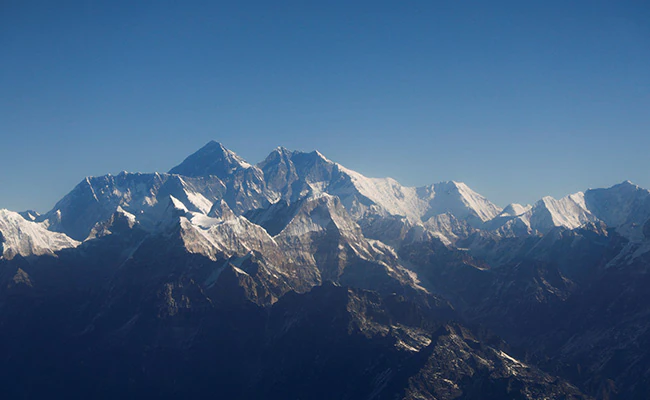Did You Know The Sneeze Of Climbers Gets Frozen On Mt Everest For Centuries?

New Delhi: Apart from the stuff they leave behind, those who climb Mount Everest also leave something else. The germs and microbes of their sneeze.
A new study has found that when someone sneezes or coughs on Mount Everest, the germs are preserved in the frigid world for centuries.
According to researchers, they are leaving behind a frozen legacy of hardy microbes, which can withstand harsh conditions at high elevations and lie dormant in the soil for decades or even centuries. The study highlights the impact of rapid tourism on the pristine, frigid and delicate environment of Everest. The study published in Arctic, Antarctic, and Alpine Research states that little is known about the microorganisms found in sediments on Earth’s tallest mountains, how they reach these surfaces, and how they survive and remain active at such extreme elevations.
“There is a human signature frozen in the microbiome of Everest, even at that elevation,” said Steve Schmidt, senior author of the paper, according to an India Today report. Researchers used next-generation gene sequencing technology to analyze soil from the elevations of Mount Everest to gain new insight into almost everything and anything that’s in them.
They found microorganisms left by humans with microbes almost everywhere that seem to have blown around and landed some distance away from nearby camps or trails. The team found that some microbes seemed to have evolved.
While they normally thrive in warm and wet environments, research revealed that certain microbes have developed adaptability and were resilient enough to survive in a dormant state in such harsh conditions. The soil samples were collected by researchers who went to Everest in 2019 to set up the planet’s highest weather station. When they received the samples, they used gene sequencing and traditional culturing techniques to identify the DNA of almost any living or dead microbes in the soil. Researchers said that most of the microbial DNA sequences they found were similar to hardy, or “extremophilic” organisms previously detected in other high-elevation sites in the Andes and Antarctica. The most abundant organism they found using both old and new methods was a fungus in the genus Naganishia.
However, they also found microbial DNA for some organisms heavily associated with humans, including Staphylococcus, one of the most common skin and nose bacteria, and Streptococcus, a dominant genus in the human mouth.
While researchers don’t expect his microscopic impact on Everest to significantly affect the environment, they said, “We might find life on other planets and cold moons. We’ll have to be careful to make sure we’re not contaminating them with our own.”

Comments are closed.